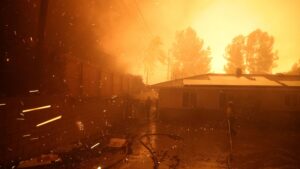Climate Change and the Rising Cost of Homeowners Insurance: What You Need to Know
At Extreme Investor Network, we’re committed to providing our readers with insightful analysis on pressing economic issues. Recently, a Treasury Department report revealed alarming trends impacting homeowners and insurers across the United States. With climate-related natural disasters surging, understanding how these events directly affect your wallet is crucial.
The Financial Toll of Climate Disasters
The Treasury Department released a comprehensive study covering the years 2018 to 2022, highlighting the staggering 84 natural disasters that incurred damages equal to or exceeding $1 billion each (notably excluding floods, which are not covered under conventional homeowners insurance). Collectively, these events resulted in a whopping $609 billion in damages.
As the statistics paint a grim picture, they also provide a stark warning: climate-related disasters are not just environmental crises, but economic ones too. Insurance costs for homeowners have risen considerably—calculated to be 8.7% faster than inflation during the study period. However, this burden is not shared equally across the country.
Disparities in Insurance Premiums
Homeowners residing in the top 20% of zip codes facing the highest expected annual losses are seeing average premiums shoot up to $2,321. This represents an eye-watering 82% increase compared to those in the safest 20% of areas. Simply put, where you live drastically impacts how much you will pay for homeowners insurance.
Nellie Liang, undersecretary of the Treasury for domestic finance, noted, "Homeowners insurance is becoming more costly and less accessible for consumers," signaling a widening crisis for many families. As natural disasters continue to rage—like the current wildfires claiming lives and displacing tens of thousands—the economic ramifications further deepen.
Exponential Growth in Climate-related Events
The findings indicate that the frequency of climate-related disasters has nearly doubled compared to averages from 1960 to 2010. With a rising tide of severe weather events, from hurricanes in the Southeast to wildfires in the Southwest, it’s imperative to recognize that these aren’t isolated incidents.
Treasury Secretary Janet Yellen emphasizes this urgency, commenting, “This report identifies alarming trends of rising costs of insurance, all of which threaten the long-term prosperity of American families.”
What Can Homeowners Do?
-
Shop Around: Given the disparities in premiums based on geographic risk, homeowners should compare quotes from multiple insurance providers to find the best rates.
-
Consider Risk Mitigation: Implementing home improvements to minimize damage from potential disasters can sometimes result in lower premiums. For instance, installing storm shutters or reinforced roofing might make your home more attractive to insurers.
-
Stay Informed on Policy Changes: Keeping abreast of local and national trends in natural disasters can help homeowners anticipate potential insurance changes.
-
Review Coverage Regularly: As costs and risks evolve, reviewing your insurance coverage regularly ensures you’re adequately protected.
- Advocate for Sustainable Practices: At Extreme Investor Network, we believe in the power of collective action. Advocating for sustainable practices and infrastructure improvements in your local community can lead to long-term reductions in risk.
The Bigger Picture
The increasing frequency and severity of natural disasters underscore a complex interplay between the environment and economic stability. As more homes are affected, insurers will continue to adjust their practices, leading to further implications for consumers.
At Extreme Investor Network, we understand that navigating these changes can be confusing and overwhelming. Our mission is to empower you with the knowledge and tools necessary to adapt in a rapidly changing landscape. By staying informed and proactive, you can take charge of your financial future, even in the face of climate uncertainties.
For more insights on the economy, investing strategies, and navigating personal finance amidst environmental changes, make sure to keep following us at Extreme Investor Network!

